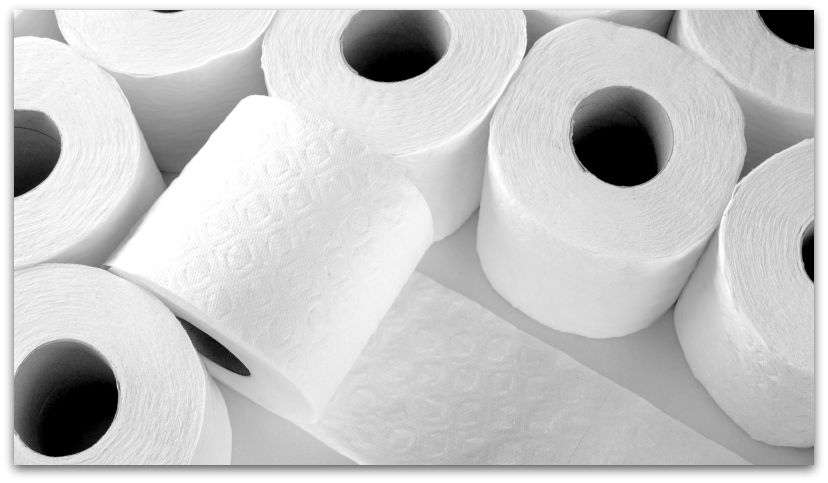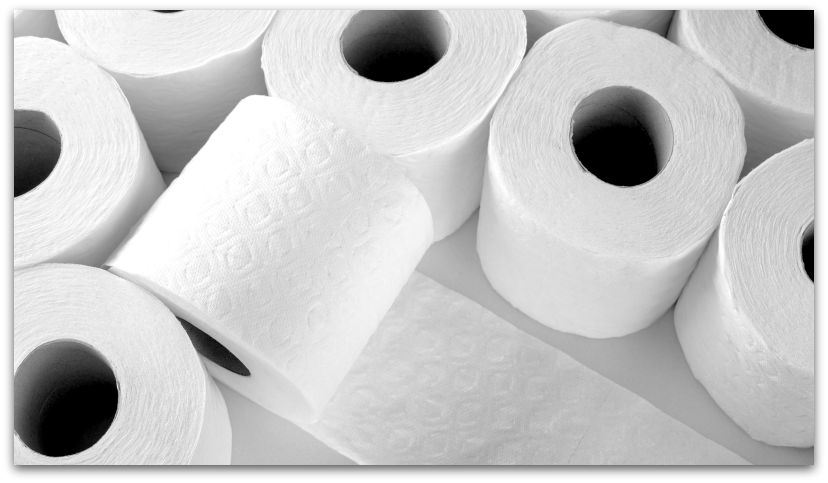Because the past simply cannot be wiped away. Here are some random facts about toilet paper.
14th Century: Origins
Paper officially made for the purpose of bathroom use was first created in the 14th century. It was produced for Chinese emperors. Size of individual sheets: two feet by three feet. (It didn’t catch on with the rest of the world.)
Mid-19th Century: Corncobs vs. Old Newspapers
In the mid-19th century U.S., people used whatever happened to be around in the outhouse. Among the solutions recorded by historians: corncobs (ouch), as well as old newspapers and catalog pages. It was such an open secret that people used old copies of the Sears-Roebuck catalog that there were bathroom-themed publications (great idea!) parodying it, particularly “Rears and Sorebutt.” Repurposing as toilet paper is also why early editions of The Farmer’s Almanac had a hole in them—so it could be hung on a hook in the bathroom.
1857: Gayetty’s Medicated Paper
The first packaged toilet paper was produced by entrepreneur Joseph Gayetty in New York in 1857. “Gayetty’s Medicated Paper” wasn’t quite what you’re used to. Rather than rolls, it was sold in flat sheets moistened with aloe.
1877: Perforation
Toilet paper sold in perforated rolls came around about 20 years later. The first was by the Albany Perforated Wrapping Paper Company. It was so scandalous to talk about bathroom matters in 1877, however, that the company called itself the APW Paper Company, and its product “perforated wrapping paper.”
1890: Scott Paper in Disguise
Scott Paper came out with their own version in 1890, but didn’t want to put their name on the product and associate its good name with such a gross product. So they “custom made” it for big corporate customers, whose name would appear on the sheets.
1935: Splinter Free
And you thought one-ply was rough: Northern Tissue introduced “splinter-free” toilet paper in 1935. Meaning that up until then…toilet paper had splinters in it.
1942: Two-Ply!
First two-ply toilet paper: St. Andrew’s Paper Mill created it in 1942 in the U.K. (But it wasn’t widely adopted until after World War II.)









